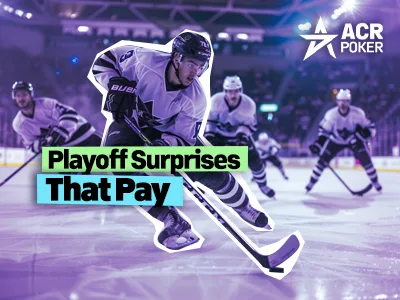How the NHL Playoff environment creates opportunities for underdogs
The NHL Playoff format magnifies small advantages and creates conditions where lower-seeded teams can upset favorites. Best-of-seven series, intensity increases, and matchup-specific factors can shift expected outcomes. This section explains the structural elements that allow underdogs to gain traction during postseason play.
Why short-term variance matters in the NHL Playoff
Single-game variance is important in regular-season play, but the NHL Playoff context amplifies the effect of hot streaks and short-term form. A goaltender who performs above expectations for a handful of games can swing an entire series. Teams that capitalize on special teams or get timely scoring are able to overcome talent gaps.
How matchup specificity changes series expectations
Matchups in the NHL Playoff often matter more than aggregate metrics. Defensive systems that neutralize a high-scoring favorite, or depth lines that wear down top units over a series, can tilt results. Coaches adapt game plans quickly, and teams that exploit matchup advantages can become viable underdogs.
Statistical indicators that signal potential NHL Playoff upsets
A data-driven approach helps identify underdogs with realistic upset potential. Several metrics and patterns have predictive value when considered in playoff contexts. This section lists measurable indicators to watch before assigning upset probability.
Key metrics to evaluate before backing an underdog
-
Goaltender save percentage trends: A hot goaltender in recent weeks can increase an underdog’s chance of winning games.
-
Expected goals (xG) and shot quality: Teams with stronger xG prevention but poor recent results may be poised for positive regression in the NHL Playoff.
-
Special teams efficiency: Underdogs that excel on the power play or penalty kill versus league averages can neutralize favorites’ advantages.
-
Lineup depth and injury-adjusted rosters: Depth becomes crucial in lengthy series; underdogs with healthy role players can outperform expectations.
Situational factors that elevate underdog chances in the NHL Playoff
Beyond raw statistics, situational context often explains why underdogs perform above market expectations. The following elements commonly affect outcomes in playoff matchups.
Impact of travel, rest and scheduling
Travel fatigue and compressed schedules influence performance in the NHL Playoff. Underdogs with better rest patterns or favorable travel logistics can maintain higher energy and execution, especially in later games of a series. Short turnarounds often magnify the value of depth players.
Coaching adjustments and tactical responses
Coaches who implement effective countermeasures—such as defensive-zone coverage alterations or matchup-driven line changes—can erode a favorite’s edge. The NHL Playoff environment rewards strategic ingenuity, and underdog teams with adaptable systems can exploit that to create upsets.
Market behavior and how bettors interpret NHL Playoff lines
Betting markets reflect public sentiment and sharp action. Understanding these movements helps identify when underdogs are undervalued or overpriced. This section explains common market phenomena and practical responses.
Reading line movement in the NHL Playoff market
-
Early sharp money: Early support from professional bettors on an underdog may indicate inside information or model-derived value.
-
Public biases: Heavy public backing of favorites can inflate prices and create value for contrarian underdog bets.
Live-game signals and in-series dynamics that favor underdogs
Live betting and in-series developments provide additional chances to back underdogs. Observing game flow and momentum shifts offers actionable insights during a series.
Live indicators that suggest increased underdog value
-
Special teams swings: If an underdog earns key power plays or neutralizes a favorite’s power play early, live odds may undervalue the underdog’s ongoing chance.
-
Goaltender fatigue or injury signals: Visible declines in goalie movement or delayed reaction times can shift win probability in-game and across the series.
-
Momentum-shifting periods: Extended offensive pressure or multiple high-danger chances in a single period can indicate a durable advantage rather than random variance.
Risk management and betting discipline during the NHL Playoff
Successful wagering in the NHL Playoff relies on defined staking plans and objective thresholds. Because upsets are inherently volatile, disciplined bankroll management minimizes downside while preserving upside.
Recommended principles for staking on upsets
-
Unit sizing discipline: Use conservative unit sizes for underdog series bets, typically a small percentage of the bankroll per wager.
-
Value-only approach: Place bets only when pre-defined model or analytical thresholds indicate an edge, avoiding emotion-driven stakes.
-
Record-keeping: Maintain a log of NHL Playoff bets, including rationale, odds, and outcomes to refine future decisions.
Example indicators table
| Indicator | Why it matters in the NHL Playoff |
| Hot goaltender (SV% > season avg) | Can swing close games and increase underdog series win probability |
| Strong penalty kill vs. favorite power play | Reduces favorite’s scoring chances and boosts underdog control |
Concluding notes on assessing NHL Playoff upsets
Identifying when underdogs shine in the NHL Playoff requires a blend of statistical analysis, situational awareness, and market interpretation. By monitoring goaltender performance, matchup specifics, special teams, rest patterns, and line movement, analysts can distinguish genuine upset opportunities from unlikely variance. Consistent record-keeping and disciplined staking further ensure that identified edges are exploited responsibly over time.

